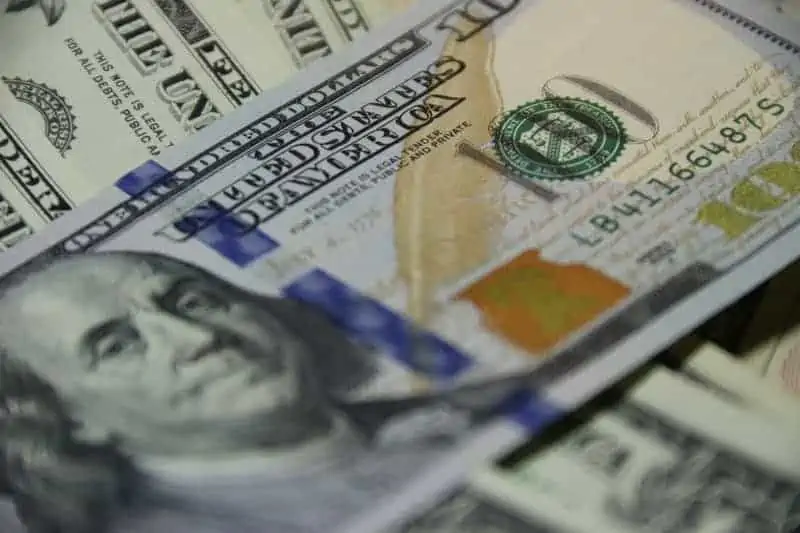10 Easy Ways to Save Thousands Of Dollars
While most of us have our own personal and specific financial goals, we also share many common goals and generally want similar outcomes when it comes to money. We want to earn more money. We want to retire at a reasonable age. We want to improve the relationship we have with our money. And we want to find ways to develop good spending habits, manage our money better and save as much of it as we possibly can.
Good money management practices are often a result of hard work, dedication, and an ongoing commitment to the long-term. But what it boils down to is simply taking initial action. In fact, you’d be surprised by how much money you can save by taking a few small steps. The below tips are 10 easy, effective, and proven ways to help you save thousands of dollars this season and any other season. The best part is that each of these tips only takes anywhere from a few minutes to around half an hour to either start or complete.
10 Ways to Easily Save Thousands Of Dollars
1 – Review and Compare Auto Insurance Quotes
- Time it takes to complete: 30 minutes
- Estimated cost savings: $100 to $1000
Comparing and shopping around for new automobile insurance every 6-12 months is a sure way to either save a few hundred dollars or at least to ensure that your policy doesn’t increase gradually.
Two fundamental principles make doing this worth your while. First, insurance providers regularly adjust their prices, and policy rates fluctuate dramatically, even over a 12 month period. Second, the industry is highly competitive, which means that companies are always fighting to get new business.
Previously, one of the best ways of doing this was to do a quick Google search to find the best providers and to get a quote from multiple providers one at a time. However, thanks to insurance marketplaces like Gabi and Policygenius, it takes relatively no time whatsoever to get access to multiple quotes from top providers in just half an hour or less.
Depending on when the last you’ve done this was, you’ll be able to save yourself more than a few hundred dollars easily. If it’s been a few years since you’ve reviewed your auto insurance policies and gotten quotes from multiple providers, there’s a good chance that you’re leaving money on the table. When you mix in additional insured drivers on the policy, your cost savings will likely increase compared to individual policies.
2 – Build a Free Financial Plan
- Time it takes to complete: 5 minutes
- Estimate cost savings: $500 to ~$2,000
A financial plan is one of the best tools you can have available to you. Your plan is like the north star of your current and future financial picture, guiding you through your decision making and showing you the exact next steps you need to be taking.
The real value of any true financial plan is that it’s holistic. It considers every major area of your financial life, rather than focusing on just one area. By being able to look at your income, savings, investments, insurance, and estate plans, you’ll uncover your financial strengths and weaknesses that will help pave the way for your road to success.
The good news is that financial planning applications like Savology can provide access to free financial planning. This can help you avoid paying anywhere from $500 upwards to $2000+ from fee-based planners. To make the most of your financial plan and to continue improving your chances of success, it’s critical to make sure that you’re reviewing your plan and the progress you’re making at least every three to six months. The bonus here is that there are numerous benefits associated with financial planning that positively impact your mental health and overall well-being.
3 – Review Your Subscriptions and Memberships
- Time it takes to complete: 30 minutes
- Estimated cost savings: $100 to $500
With the abundance of online subscriptions and memberships available, it’s easy to assume that there are a few online subscriptions and memberships of your own that you are not using nearly as much as you should be. It’s becoming common to rely on many of these services for everyday essentials and entertainment, from food delivery boxes and monthly clothing boxes to video streaming services.
Ask yourself this: How many channels from your 200+ cable package are you actually watching? If you’re subscribed to services like Netflix, Prime, and/or Disney+, are you using them enough to justify their monthly rate? On their own, they’re relatively cheap, but when you add them up, these costs can start to stack up quite considerably. Personally, we recently removed Disney+ and Netflix (well, we are now on a family tier), which saves us around $20 every month, adding up to more than $200 every year.
When you’re reviewing your online subscriptions, it’s important not to overlook memberships such as your gym membership and industry-related memberships. The bottom line here is that you really need to consider whether or not you’re getting your money’s worth. There’s a good chance you can find free alternatives that can easily save you another few hundred dollars of your well-earned money.
4 – Eliminate Your High-Interest Debts and Loans
- Time it takes to complete: 5-10 minutes (to review)
- Estimated cost savings: $100 to $1000
High-interest, revolving debts like credit cards are a sure way of killing your financial plan and getting in the way of your ability to save. Instead of saving, your hard-earned money is directly being used to pay for interest payments. By paying down your debt, you’ll be saving yourself hundreds or even thousands of dollars in interest payments over time.
When you’re working on paying off your debts, focus on the accounts with the highest interest rates, and start paying those down first. Once you’ve finished paying one-off, work on the account with the second-highest interest. Continue in that order. You’ll soon find over time that it’s not as hard as you once thought it was to pay down your debts, especially when you tackle them in order of highest-interest first.
For better results, create an action plan for paying down your debts and stick to it. This plan will help you stay focused and committed to tackling your debts most effectively and freeing up cash flow so that you have more available cash to save and use in other areas. If you’re unsure where to start, consider using a debt payoff planner like Savvy, or similar alternatives, that can help you get out of debt entirely by taking baby steps.
5 – Get an Accountability Partner
- Time it takes to complete: 5 minutes (to get one)
- Estimated cost savings: $1000+
An accountability partner also referred to as a success partner, is exactly what it sounds like. A person who’s there to hold you accountable for the decisions and actions in your financial life. For most people, an accountability partner is usually a spouse, partner, or even someone they live with. However, it can be anyone you trust and can rely on.
Early on, you and your accountability partner need to have a conversation about expectations and how you both foresee the relationship going. Like any relationship, you need to share information (and likely details) of what you are working on and be comfortable asking for their help to get you there. When you find your accountability partner, I highly recommend having regular “check-ins” and conversations about money the same way you would have a regular phone call with a friend or a scheduled one-on-one meeting with an employer. If this person happens to be a friend or a spouse, it makes regular conversations about money that much easier.
6 – Enter a No-Spend Challenge With A Friend for 30 days
- Time it takes to complete: less than 5 minutes (to challenge your friend)
- Estimated cost savings: $100-$1,000
The best way to save your money is to stop spending money in the first place. Believe me, as someone who can be impulsive with my money at times; I know just how hard not spending it can be. This is exactly where a no-spend challenge can help out.
Pick one week, or even month if you can, in your calendar and challenge a friend (it can even be your accountability partner) not to spend a single dime within that time period. If you want to make this challenge even more ‘fun,’ encourage multiple friends to get involved so that you can challenge and support one another while even keeping a tallying leaderboard to track spending amongst the group.
Keep in mind that it’s next to impossible to avoid spending entirely as you’ll have bills to pay, but pick one or two spending categories and challenge yourself with avoiding spending in those areas. To really make the most of this challenge, keep any cash or cards you have out of sight and out of reach. If you have cash lying around, deposit it ahead of time. If you have cards, tuck them away somewhere safe and out of sight for the week or month.
You’re probably wondering what the prize is, considering this is a challenge. That one is completely up to you and your friends. But from what I’ve seen, saving well over a few hundred dollars is more than a good enough prize.
7 – Freeze Your Credit Card(s) for One Month
- Time it takes to complete: less than 5 minute
- Estimated cost savings: $200-$1,000
Freezing your credit cards might seem like an odd thing to do, but it works. When you have credit cards at your disposal every time you make a purchase, there’s a good chance that you’ll be inclined to use this card more than you ever need to. It reinforces bad habits. Not to mention, you might even find yourself using this card when you have cash available, which can potentially lead to more unnecessary spending by way of interest payments.
A good friend of mine tried this for herself, planning only freezing her cards for one month. It turns out that she kept her cards frozen for more than four months because she actually forgot all about having them or needing them. Those four months saved her more than $1,000 in excessive, compulsive spending. By freezing your credit cards and keeping them completely out of sight, you’ll be resisting any urge you have of spending compulsively.
8 – Automate Your Savings
- Time it takes to complete: 30 minutes
- Estimated cost savings: $120-$5,000
This is one that you’ve definitely heard of before, and you are maybe already doing, but the number of people still not taking advantage of this continues to surprise me. By automating your monthly savings, you’ll feel instant relief knowing that your money is being put to good use immediately.
The real trick here is just getting started—even if you can only save $100 from every paycheck, that’s still $100 more than you were previously saved. After one year, you’ll end up with $1200 more than you had the previous year, without the interest being compounded. The first part is getting the foundation in place. Over time you can work on increasing your monthly contribution amount.
9 – Automate Your Bills and Expenses
- Time it takes to complete: 30 minutes
- Estimated cost savings: $50 – $100
Like automating your savings, you’ll also want to automate any expenses or bills that you’ll have to pay regularly. Whether it’s your monthly cable or internet bill, cell phone bill, and other utilities, there’s a good amount of peace of mind knowing that your bills are automatically being paid when they need to be. This is a sure way of helping you avoid any chances of late payments and interest incurred on your total outstanding payments. It also pays to know exactly when and how it is coming out of your accounts regularly for budgeting purposes. This can help you plan for additional and significant planned, as well as unplanned, purchases well into your future.
10 – Use Separate Bank Accounts
- Time it takes to complete: 30 minutes
- Estimated cost savings: $100 – $1000
Finally, one of the best things you can do is use separate bank accounts for specific reasons. You should have a distinct bank account for your emergency fund, any sinking funds (also known as vacation funds or misc. expense funds), and other types of funds where you need to keep money separate. By doing this, you’ll make sure that you are not spending your money on impulse or miscellaneous purchases and that money in these accounts is being used only for their intended purpose. This alone can end up saving you anywhere from a few hundred to a few thousand dollars.
Choose a bank account that works on your side when it comes to the interest you receive. Keep in mind that online banks often offer higher interest rates than traditional brick-and-mortar banks. Having a high-interest bank account is a great way to grow your money while you sleep, helping you meet your financial goals faster.
Fall Forward With Your Savings
This Fall, rather than waiting for the New Year’s train to arrive or procrastinating about making your next money move, use the available time you have right now to start taking action using the above 10 tried-and-true tips provided. Combined, your total savings can add up to well over thousands of dollars every single year. So what are you waiting for?
This article originally appeared on Your Money Geek and has been republished with permission.







